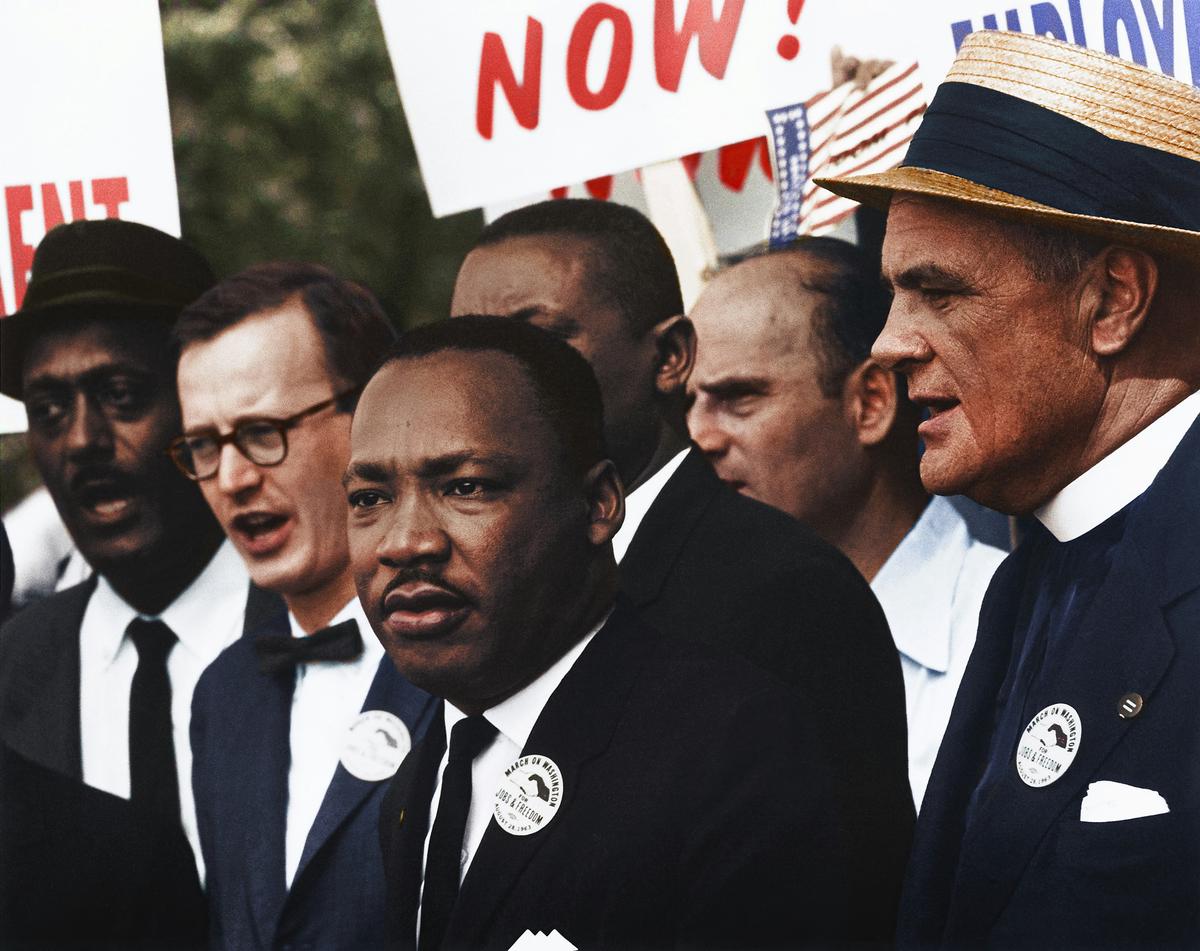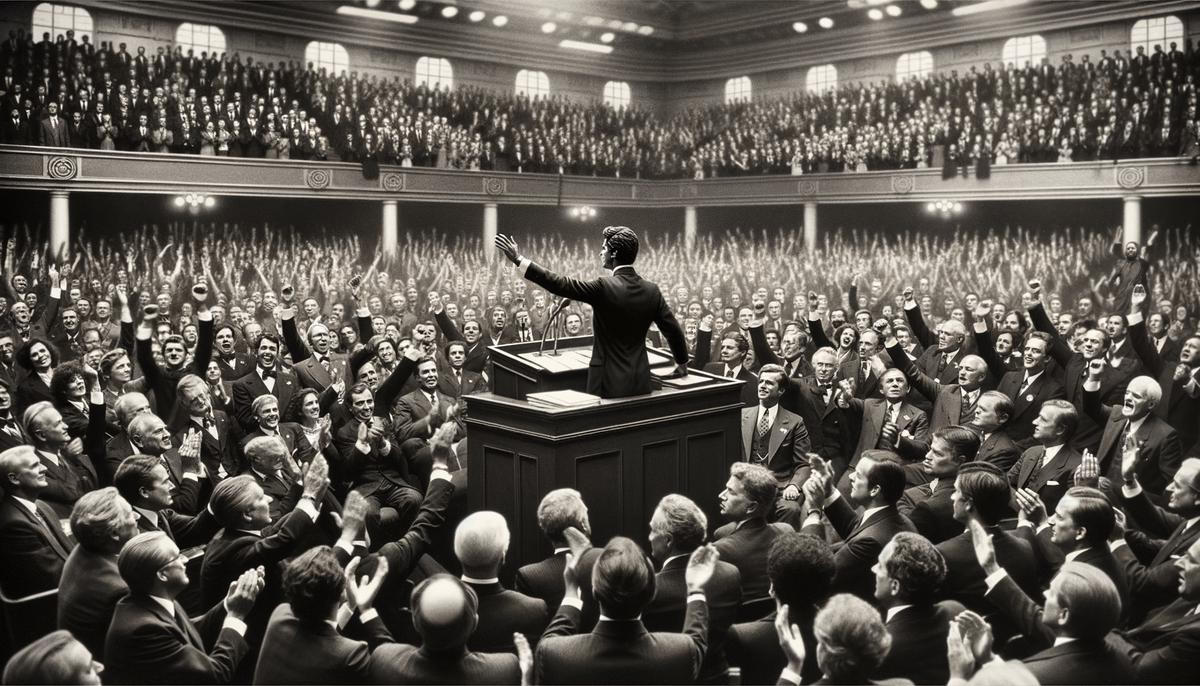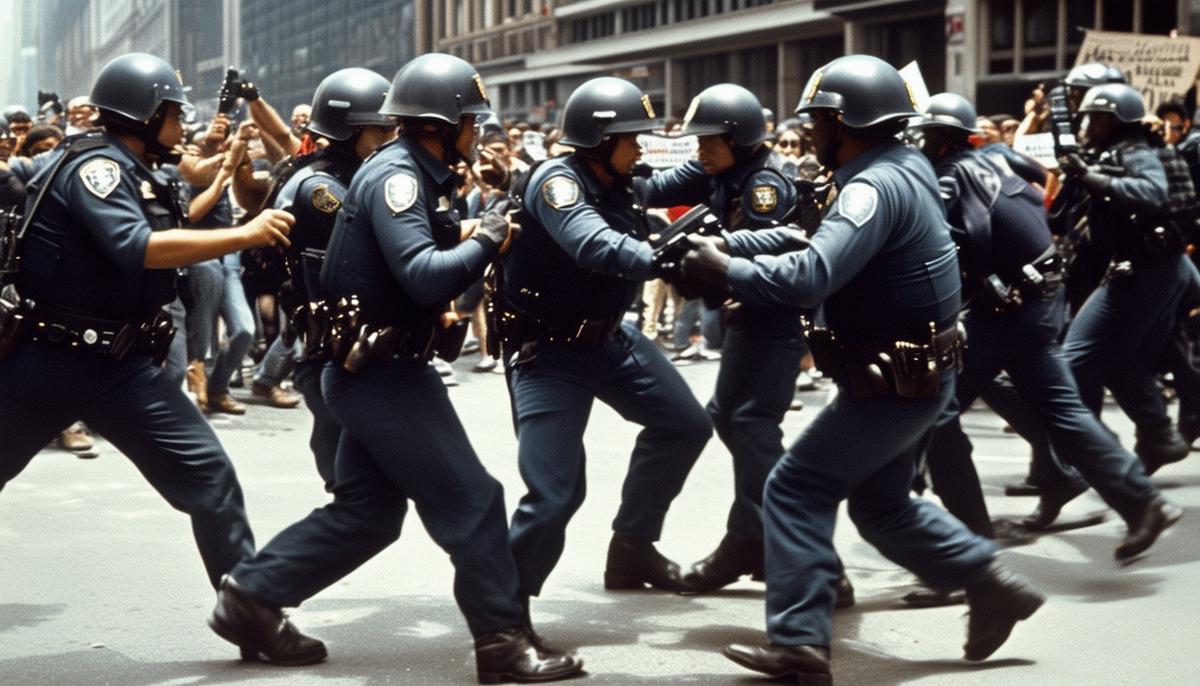Background and Build-Up
In the vibrant 1960s, America danced on the edge of change. The Vietnam War rumbled on, swallowing young lives. Teens marched for peace, their bell-bottoms swaying to the rhythm of protest. The civil rights movement roared through every state, demanding justice that couldn't wait.
Martin Luther King Jr.'s voice for equality was silenced by an assassin's bullet in April 1968, sparking grief and fury across the nation. Robert F. Kennedy's hope for a different future met a similar fate, leaving the country raw with pain.
Lyndon B. Johnson, exhausted from the war's grind, stepped out of the re-election race. His Great Society dreams tangled in Vietnam's quagmire. As the Democratic National Convention approached, Chicago's iron-fisted mayor Richard J. Daley prepared to host, unknowingly setting the stage for a historic showdown.

Photo by unseenhistories on Unsplash
The Protests and Police Response
Chicago buzzed with anticipation as waves of protesters flooded in. The Yippies brought their cheeky brand of pageantry, nominating Pigasus the pig for president. But beyond the humor, a grave message rang out: end the Vietnam War.
As voices rose, so did tensions. The Chicago police, backed by Mayor Daley, clashed with demonstrators in what became known as the Battle of Michigan Avenue. Tear gas clouded the air as batons met bodies in a chaotic dance captured by news cameras.
Television screens across America buzzed with images of riot-geared police facing off against idealistic youth. As protesters chanted "the whole world is watching," they tapped into a truth: media attention was shifting power and perception.

Inside the Convention
The convention hall spun with political chaos, each twist revealing new discord. At the heart of the debate was the contentious Vietnam War peace plank. Some delegates pushed for an unconditional end to bombing and troop withdrawal, while others feared it would make the party look weak.
The nomination of Hubert Humphrey, seen as Johnson's man, added fuel to the fire. To anti-war activists, he represented old-school thinking when the world cried out for change.
As Humphrey clinched the nomination, the room swayed with clashing ideals. It was a vivid glimpse of a party trying to bridge a generational gap amidst a tempest of progress.

The Walker Report and Aftermath
In the wake of the convention, the Walker Report dropped like a bombshell. Helmed by Daniel Walker, it boldly declared the events a "police riot." The report detailed incidents where law enforcement traded badges for brutal batons, forcing many to re-evaluate their perception of authority.
The impact rippled through the establishment, shaking up how future conventions would be handled. It sparked discussions on aligning policing methods with protest rights and influenced society's tune on the power of documentation and righteous rebellion.
Even today, the Walker Report's themes resonate, reminding us that the quest for justice always calls us back to the dancefloor of change.

Legacy and Lessons
The 1968 Democratic National Convention left a legacy as rich as any celebrated album. It proved a crossroads for the Democratic Party, sparking major reforms in the nomination process. No longer would power brokers alone call the shots; grassroots influence took center stage.
The chaos of '68 fueled future generations to stand boldly against the status quo. Today's activists, armed with smartphones and social media, echo the cry of "The whole world is watching" across digital airwaves.
The influence of that rebellious chapter spirals through time, reminding us that change often births from tumult. It's a handshake with history, a wink at the past, and a promise for what's groovy yet to come.

As we look back at the events of 1968, the enduring lesson is clear: the pursuit of justice and change is a continuous journey. The echoes of that year remind us that every voice raised in protest contributes to the rhythm of democracy, ensuring that the call for progress never fades.
- Farber D. Chicago '68. University of Chicago Press; 1988.
- Mailer N. Miami and the Siege of Chicago: An Informal History of the Republican and Democratic Conventions of 1968. New York Review of Books; 2008.
- Walker Report. Rights in Conflict: The violent confrontation of demonstrators and police in the parks and streets of Chicago during the week of the Democratic National Convention of 1968. Bantam Books; 1968.
